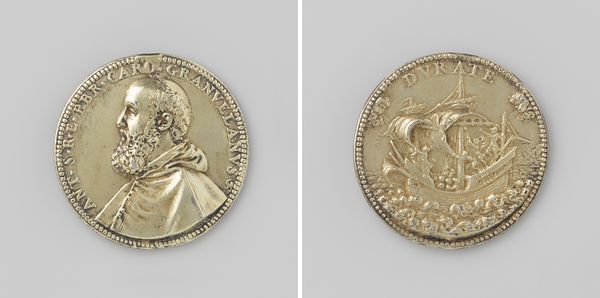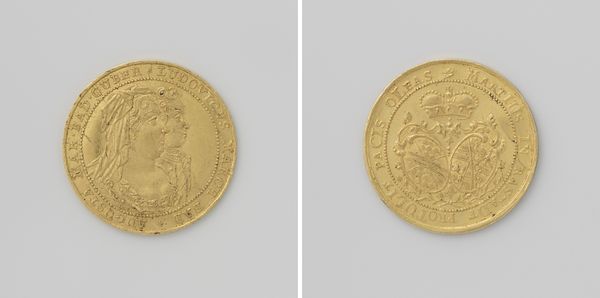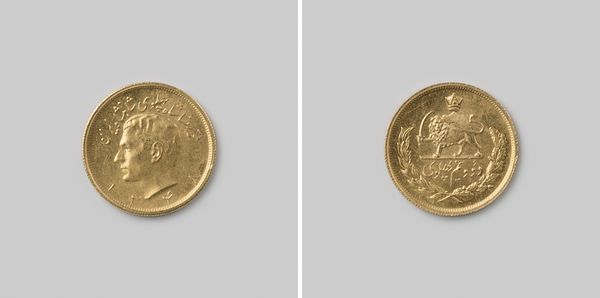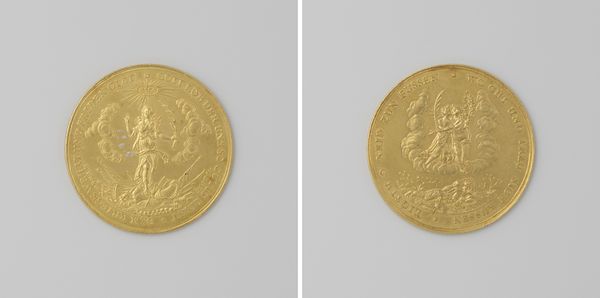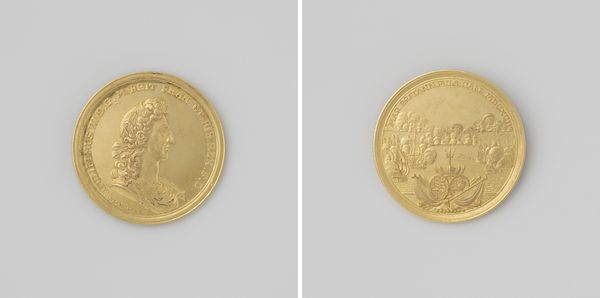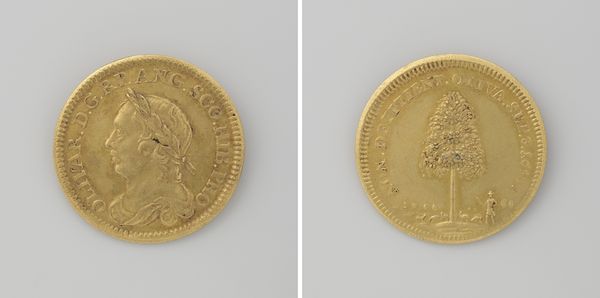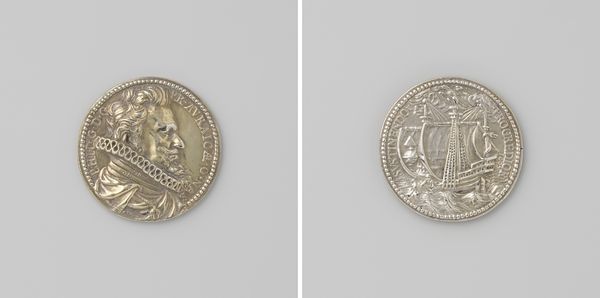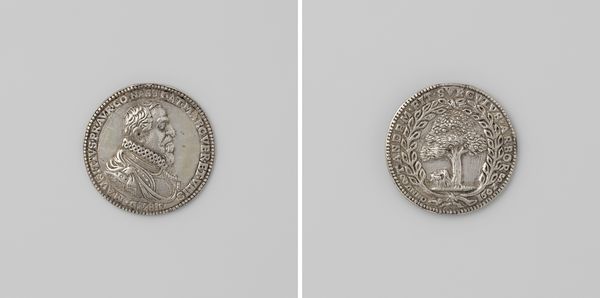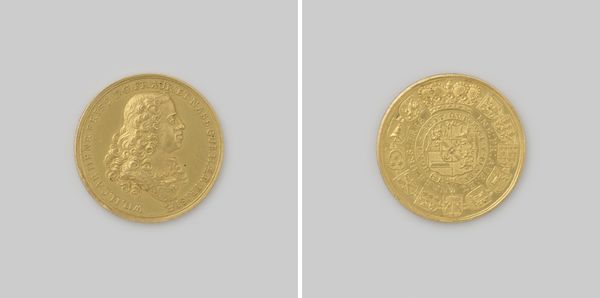
carving, metal, relief
#
portrait
#
medal
#
carving
#
metal
#
relief
#
mannerism
#
11_renaissance
Dimensions: diameter 3.3 cm, weight 10.85 gr
Copyright: Rijks Museum: Open Domain
Curator: This striking medal features a portrait of Rudolph II, Holy Roman Emperor. It dates from between 1603 and 1608. Paulus Willemsz. van Vianen is credited as its creator. Editor: It’s so tactile! Just look at the depth of the carving, and the lustrous, heavy feel the gold would have. There's almost an indulgence in the materiality, especially in the folds of the ruff and the density of the laurel wreath. Curator: Indeed, the opulence reflects the emperor's court in Prague, a centre of Mannerist art and a hub of patronage. Rudolph II used art to cultivate an image of power and wisdom, and this medal certainly participates in that project. Editor: You see the emperor promoting his power, and I see van Vianen flexing his skills! The intricate details were painstakingly achieved, showing off technical mastery and the inherent value of the precious metal. It’s a dance between subject and artist, ruler and material. How would something like this even circulate? Curator: It likely wouldn't circulate in the same way as common currency. These medals were diplomatic gifts, marks of honour bestowed upon favoured individuals, or even keepsakes produced for those within the Emperor’s court circle. It's not really money, but more propaganda to show soft power. Editor: I suppose. But who actually made the thing? The scale and minute level of detail imply so much labor. Curator: We attribute the work to Paulus Willemsz. van Vianen. However, workshops would have involved numerous skilled artisans in varying degrees. The division of labour within the metalworking trade is certainly ripe for further investigation! The Mannerist style adds to the drama and grandeur of the emperor's depiction, placing him in the line of great leaders, ensuring his immortal place. Editor: I'm left thinking about what the process involved—the casting, carving, polishing, the labour, and the value assigned not only to the sitter but to those unseen hands involved in the making. Curator: For me, the medal illuminates how political power sought legitimacy through artistic representation in the late Renaissance, shaping Rudolph II's legacy in ways both obvious and subtle.
Comments
No comments
Be the first to comment and join the conversation on the ultimate creative platform.

